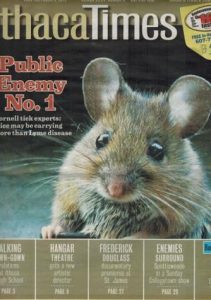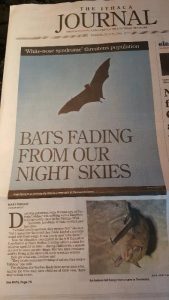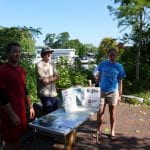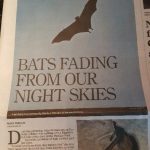This research investigates how to develop risk messages that that foster understanding of the linkages among wildlife, human, and environmental health, often in the context of infectious or zoonotic disease, including rabies and Chronic Wasting Disease. Some of the research extends into examining these issues in the context of climate change. While showcasing the benefits of promoting the health of all species, a One Health approach draws attention to potential threats associated with human-animal interactions, including the transmission of zoonotic disease. As communication scholars, we know that unintended consequences of messages can and do occur, and one of the questions driving my research is whether some messages could result in boomerang effects, including decreased public support for species conservation.
Select Publications
- Balog-Way, D., McComas, K., Leong, A., Brown, D., & Schuler, K. (2023). Towards an evidence-informed strategy for communicating lead ammunition risks. Wildlife Society Bulletin.
- Leong, A., McComas, K., Balog-Way, D., & Schuler, K. (2023). Expanding on Behavioral Intentions in the Risk Information Seeking and Processing (RISP) model: Socio-cognitive factors predicting information seeking, sharing, and discussion of lead ammunition. Science Communication.
- Siemer, W. F., Lauber, T.B., Kretser, H.E., Schuler, K.L, Verant, M., Herzog, C.J., & McComas, K.A. (2021). Predictors of intentions to conserve bats among New York property owners. Human Dimensions of Wildlife, 26, 275-292. DOI: 10.1080/10871209.2020.1817628
- Lu, H., McComas, K., Kretser, H., & Lauber, B. (2020). Scared yet compassionate? Exploring the Order Effects of Risk Messages Communicating Bat Rabies and White-nose Syndrome. Science Communication.
- Song, H., McComas, K. A., & Schuler, K. L. (2018). Hunters’ responses to urine-based scent bans tackling chronic wasting disease. The Journal of Wildlife Management. 83:457-466.
- Song, H., McComas, K. A., & Schuler, K. (2019). Source Effects on Psychological Reactance to Regulatory Policies: The Role of Trust and Similarity. Science Communication. 40:591-620.
- Lu, H., McComas, K. A., Buttke, D. E., Roh, S., Wild, M., & Decker, D. J. (2017). One Health messaging about bats and rabies: how framing of risks, benefits and attributions can support public health and wildlife conservation goals. Wildlife Research. 44:200-206. doi.org/10.1071/WR16061
- Lu, H., McComas, K. A., Buttke, D., Roh, S., & Wild, M. (2016). A One Health Message about Bats Increases Intentions to Follow Public Health Guidance on Bat Rabies. PLoS One. Published online doi.org/10.1371/journal.pone.0156205.
- Roh, S., Rickard, L., McComas, K. A., & Decker, D. J. (2016). Public understanding of One Health messages: The role of temporal framing. Public Understanding of Science. (DOI: 10.1177/0963662516670805).
- Roh, S., McComas, K. A., Rickard, L., & Decker, D. J. (2015). How motivated reasoning and temporal frames may polarize opinions about wildlife disease risk. Science Communication. 37:340 – 370. DOI: 10.1177/1075547015575181
- Rickard, L., McComas, K., Clarke, C., Decker, D., & Stedman, R. (2013). Exploring risk attenuation and crisis communication after a plague death in the Grand Canyon. Journal of Risk Research, 16, 145-167. doi.org/10.1080/13669877.2012.725673
- Decker, D., Evensen, D., Siemer, W., Wild, M., Leong, K., Stedman, R., & McComas, K. (2012) Public perceptions of wildlife-associated disease: risk communication matters. Human-Wildlife Interactions, 6, 112 – 122.












